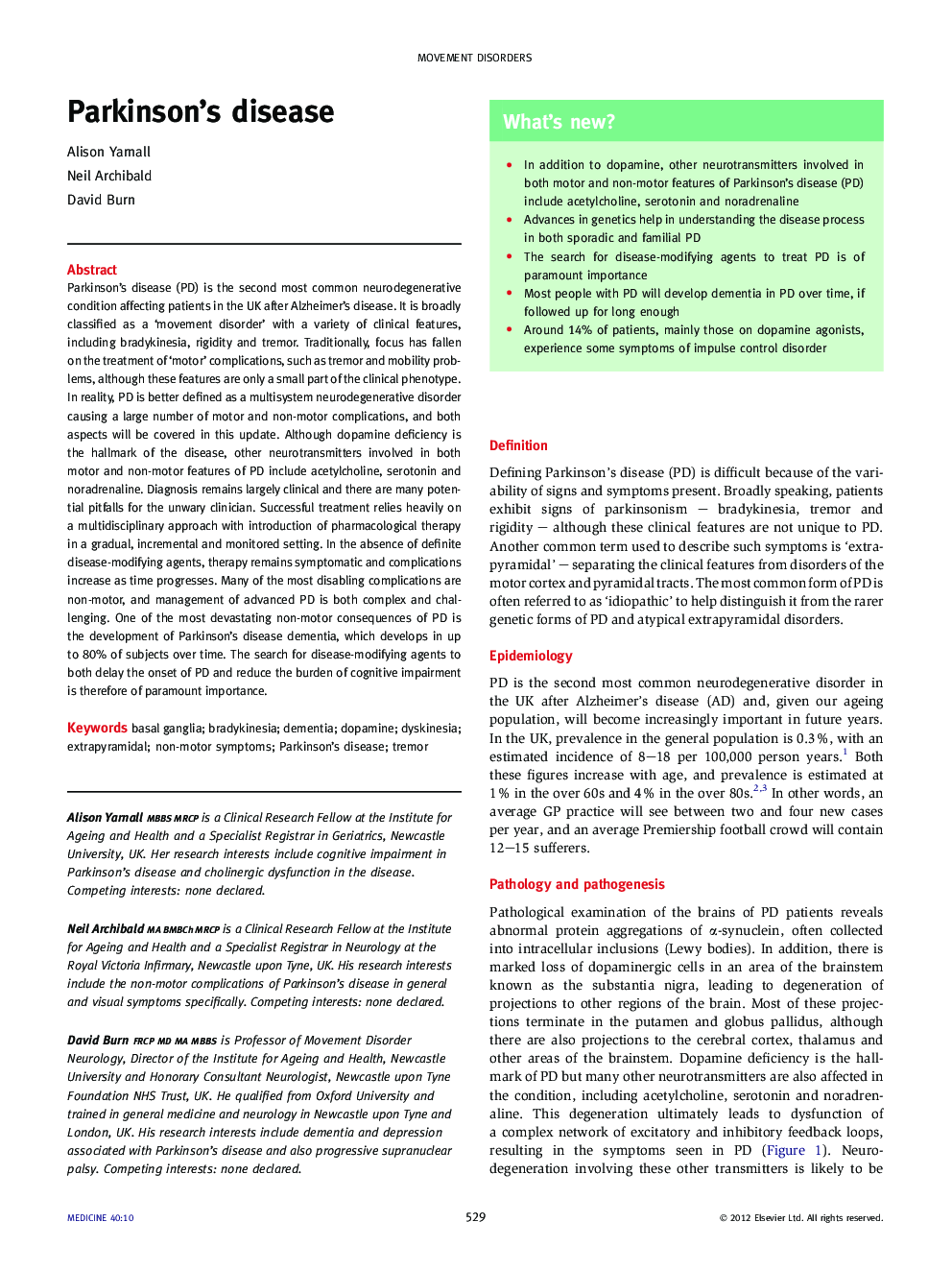| Article ID | Journal | Published Year | Pages | File Type |
|---|---|---|---|---|
| 3804006 | Medicine | 2012 | 7 Pages |
Parkinson's disease (PD) is the second most common neurodegenerative condition affecting patients in the UK after Alzheimer's disease. It is broadly classified as a ‘movement disorder’ with a variety of clinical features, including bradykinesia, rigidity and tremor. Traditionally, focus has fallen on the treatment of ‘motor’ complications, such as tremor and mobility problems, although these features are only a small part of the clinical phenotype. In reality, PD is better defined as a multisystem neurodegenerative disorder causing a large number of motor and non-motor complications, and both aspects will be covered in this update. Although dopamine deficiency is the hallmark of the disease, other neurotransmitters involved in both motor and non-motor features of PD include acetylcholine, serotonin and noradrenaline. Diagnosis remains largely clinical and there are many potential pitfalls for the unwary clinician. Successful treatment relies heavily on a multidisciplinary approach with introduction of pharmacological therapy in a gradual, incremental and monitored setting. In the absence of definite disease-modifying agents, therapy remains symptomatic and complications increase as time progresses. Many of the most disabling complications are non-motor, and management of advanced PD is both complex and challenging. One of the most devastating non-motor consequences of PD is the development of Parkinson's disease dementia, which develops in up to 80% of subjects over time. The search for disease-modifying agents to both delay the onset of PD and reduce the burden of cognitive impairment is therefore of paramount importance.
